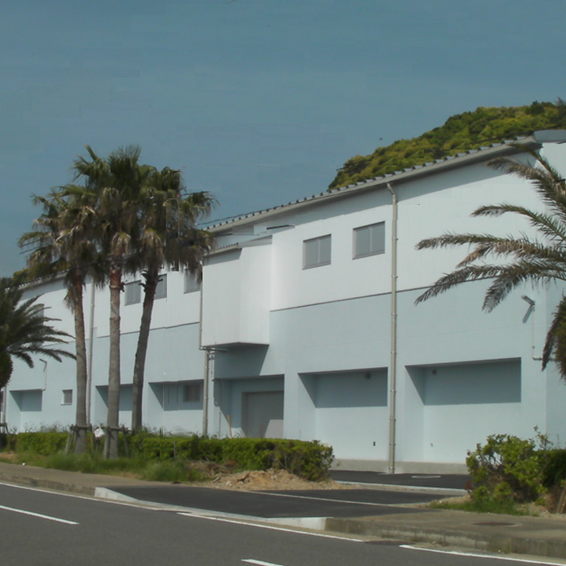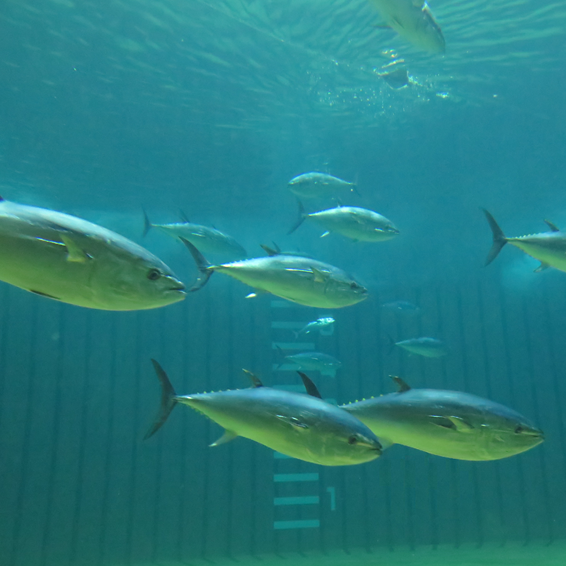Tuna Aquaculture Division
Bluefin tuna aquaculture in Japan mainly uses wild juvenile fish caught in the waters around Japan as seedlings. With the stock of Pacific bluefin tuna being low, there are high expectations for the mass production of artificial seedlings through full lifecycle aquaculture technology and the resulting transition to sustainable aquaculture production.
The Tuna Aquaculture Division uses the Tuna Breeding Research Facility, which is equipped with large land-based tanks, at the Nagasaki Field Station as well as marine- and land-based breeding facilities at the Amami Field Station to conduct research on controlling bluefin tuna maturation and spawning as well as the production of superior seedlings. To ensure the stable production of farmed bluefin tuna in the future, the division is cooperating with universities and private companies to advance these full lifecycle aquaculture technologies.
The Tuna Aquaculture Division consists of the Maturation Control Group and Tuna Seed Production Group.
Maturity Control Group
The Maturation Control Group uses the Tuna Breeding Research Facility to research techniques for breeding broodstock and inducing maturity and spawning to develop stable egg collection techniques from broodstock of bluefin tuna.
Tuna Seed Production Group
The Tuna Seed Production Group uses both marine- and land-based breeding facilities to research artificial seedling production technology, improve seedling quality, and develop full lifecycle cultured bluefin tuna strains for breed improvement by conducting breeding trials of bluefin tuna from eggs to the adult stage. In addition, they support research on tuna resources.




